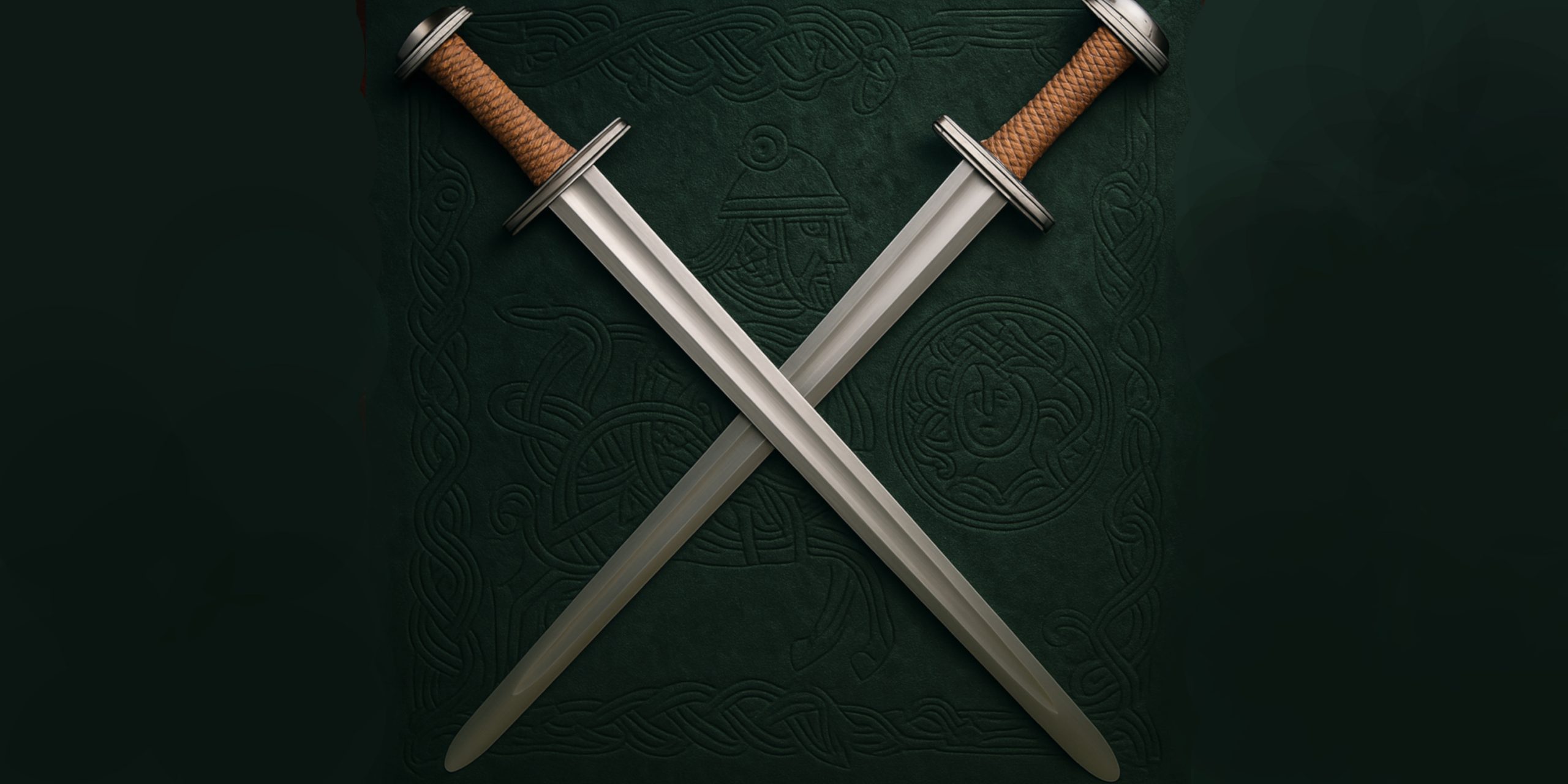
The Frankish spatha was a type of straight, double-edged sword that evolved from Roman cavalry weapons and became widely used across the early medieval Frankish kingdoms. Though closely tied to the Merovingian and Carolingian periods, its roots lie deeper in Late Roman military traditions. The spatha stood as a key battlefield weapon before the emergence of the Viking-age swords and the arming swords of the High Middle Ages.
Specifications
| Feature | Detail |
|---|---|
| Overall Length | 85–100 cm |
| Blade Length | 70–90 cm |
| Blade Width | 4.5–5.5 cm |
| Blade Type | Straight, double-edged |
| Cross-guard | Minimal or small, often straight |
| Grip | One-handed, wooden with inlays |
| Pommel | Disk-shaped or trilobate designs |
| Weight | Roughly 1.0–1.3 kg |
| Construction | Pattern-welded iron and steel core |
History and Evolution
- Roman Origins: The spatha was first developed during the Roman Empire for cavalry use. By the 3rd century AD, it had largely replaced the gladius in the Roman military.
- Germanic Adoption: Germanic tribes, including the Franks, adopted and adapted the spatha, often preserving the blade’s structure but altering hilt design and decoration.
- Merovingian Period (5th–8th century):
- The Frankish spatha became a mark of noble status.
- Richly decorated examples were buried with elites.
- Carolingian Period (8th–9th century):
- More standardised production.
- Transitioned gradually into the early medieval sword, precursors of the knightly arming sword.
Advantages and Disadvantages
Advantages:
- Long reach made it effective against infantry with shields.
- Pattern welding improved durability and aesthetics.
- Prestige weapon, often richly decorated and symbolically important.
Disadvantages:
- Lack of a strong guard made hand protection minimal.
- Less suited to thrusting than later cruciform swords.
- Heavier and less agile than shorter blades like the seax or gladius.
Comparison with Similar Weapons
| Weapon | Origin | Length | Function | Key Differences |
|---|---|---|---|---|
| Roman Gladius | Roman | ~60–75 cm | Close combat thrusting | Shorter, designed primarily for thrust |
| Viking Sword | Norse | ~90–100 cm | Cutting and thrusting | Broader guard, more developed pommel |
| Seax | Germanic | ~30–60 cm | Utility and combat | Single-edged, often shorter |
| Arming Sword | Medieval | ~90–110 cm | Versatile combat | Cross-guard and pommel more advanced |
Legacy
- The spatha bridged the military cultures of late Rome and early medieval Europe.
- Frankish spathae influenced sword-making traditions in the British Isles, Scandinavia, and Central Europe.
- Surviving examples provide critical insight into social hierarchy, trade, and metallurgical skill during the early medieval period.
- Some spathae were passed down or ritually buried, indicating their symbolic value as more than just weapons.
Where to See Authentic Spathae
- Musée de Cluny (Paris, France) – Merovingian-era swords with original fittings.
- Rheinisches Landesmuseum (Bonn, Germany) – Frankish and Alemannic burial finds.
- British Museum (London, UK) – Spathae from Frankish contexts discovered in Anglo-Saxon England.
- Germanisches Nationalmuseum (Nuremberg, Germany) – Notable collection of early medieval arms.
Collector’s Guide
Availability and Legal Considerations
- Authentic spathae are rare and typically held by museums or private collectors.
- Export and ownership are heavily regulated due to heritage protection laws.
- Reproductions and replica spathae are available through specialist makers and are popular among reenactors.
Auction Prices (Recent Estimates)
| Item | Estimated Price Range |
|---|---|
| Merovingian Spatha (fragment) | £5,000 – £12,000 |
| Complete Spatha with Fittings | £15,000 – £30,000 |
| High-quality Replica | £300 – £800 |
| Pattern-welded Reproduction | £1,000 – £2,000 |
Collector Tips
- Seek provenance and legal documentation for any authentic item.
- Pattern welding and hilt design are critical indicators of authenticity.
- Be wary of over-cleaned pieces; patina is important for historical integrity.
- Auction houses such as Hermann Historica (Germany) and Timeline Auctions (UK) occasionally list early medieval swords.
If you’re considering adding a Frankish spatha to a collection, focus on quality replicas unless you have the expertise and resources for authentic artefacts. Historically accurate reproductions can provide the visual and tactile presence of the original without the risk or legal complexity.



